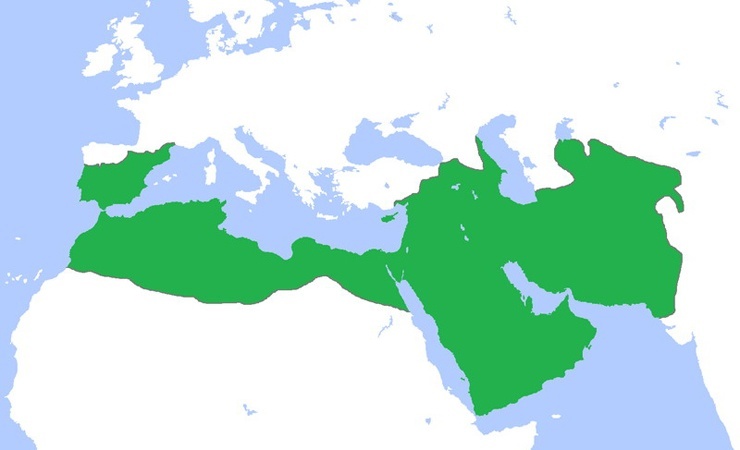TOP 10: The largest passenger aircraft in the world
How to explain the irresistible desire of man in the sky? A simple desire to learn something new or natural impulses of the soul. But every time my heart aches when a handsome passenger liner flies overhead.
Paradoxically, the impetus for the development of civil aviation was given by the Second World War, when it became necessary to quickly mix not only the military, but also civilians over long distances during evacuation.
Now let's take a closer look at the largest passenger aircraft in the world.
Although this model is not among the large aircraft, it was the first jet passenger airliner that was conceived and created for the purpose of transporting passengers, and went into mass production. The era of passenger aircraft construction began. This first aircraft just earned the right to open the list of large aircraft.
The idea of creating a liner appeared in 1942, and the Comet made its first flight on January 9, 1951. The route ran from London to Johannesburg with stops in Rome, Beirut, Khartoum, Entebbe and Livingston. The crew consisted of 4 people, the aircraft could take 36 passengers on board.
After 5 air crashes, the first project of the De Havilland DH.106 "Comet" was closed. All subsequent modifications of the Comet repeated the first version with minor improvements.
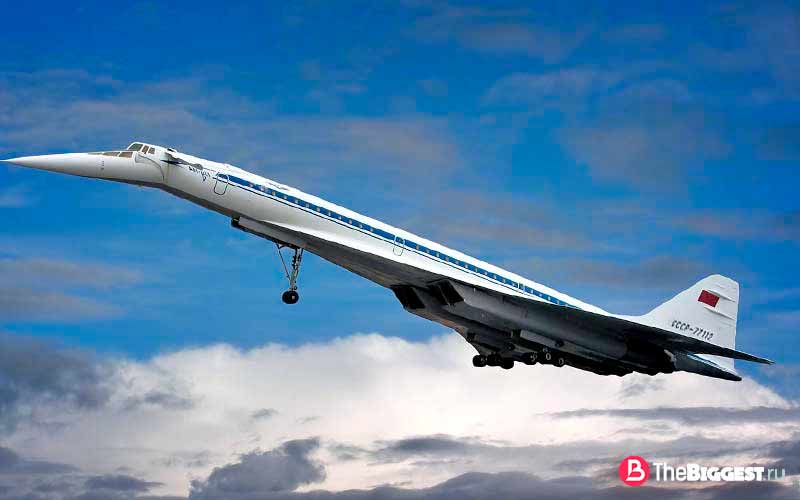
On the last day of 1968, the first Soviet supersonic passenger aircraft of the Tupolev Design Bureau made its first test flight.
The Soviet airliner was radically different from Concorde-type aircraft. An important difference is the shape and profile of the wing. The wings did not have flaps or fender liner. Decrease in speed occurred with the help of the deflected front of the fuselage and the extension of the front wing. At that time, the Tu-144 had a modern navigation system. A system of ejection seats for the crew was envisaged.
As it turned out later, although the plane was ultramodern for its time, it had a number of shortcomings. The most resonant crash of the Tu-144 occurred on June 3, 1973 in La Bourget, France. After a series of disasters, the airliner was taken out of production.
In 1997, one of the modifications of the Tu-144 was used by NASA as a flying laboratory in order to create a fundamentally new supersonic aircraft of a similar design. After testing, the Tu-144 model was dismantled.

One of the two supersonic aircraft in the world, created jointly by the British and the French. In 1969, the Concorde took to the skies. But only after 7 years of test flights, on January 21, 1976, the aircraft took passengers on board and made its first commercial flight.
Seven aircraft were used by the leading airlines British Airways and Air France. Over the entire period of operation, and this is almost 27 years, 3 million passengers were transported by the supersonic liner. What puts this type of aircraft among the champions.
In the early 2000s, due to malfunctions in the fuel system and due to external influences, 2 crashes of Concord-type aircraft occurred. Air France has completely abandoned the operation of aircraft. Over time, British Airways stopped using this supersonic aircraft in commercial traffic. Concorde had its license for passenger flights revoked.
The Concorde made its last flight on November 26, 2003. Thus ended the era of supersonic passenger transport.
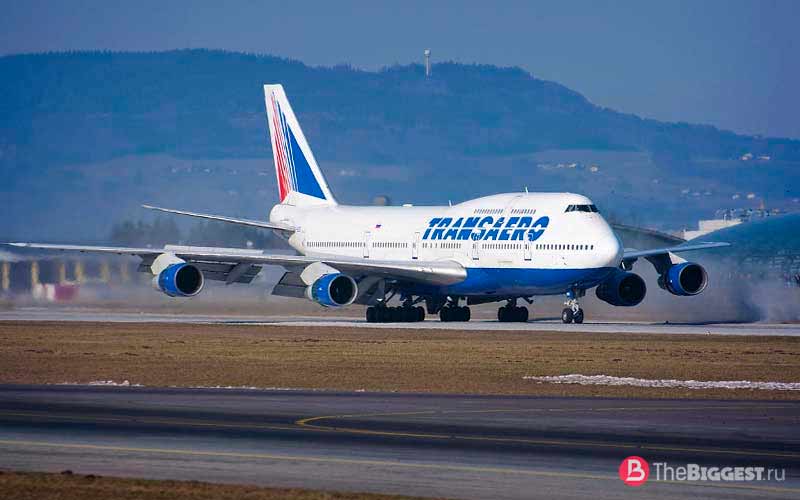
The very first heavy, roomy and truly large airliner was the Boeing 747. On February 9, 1969, the aircraft made its first test flight.
Boeing 747 is designed with two decks. The upper passenger deck is shorter than the main fuselage, making it the most recognizable aircraft in the world. Cabin capacity when divided into classes: with the 3rd division - 366 passengers, with 2 - 452 passengers.
On the basis of this Boeing, military modifications were created. One of these transported the Space Shuttle from its assembly site to the Cape Canaveral launch site in an external mount.
For 36 years, the Boeing 747 was the largest passenger aircraft. In 2005, leadership passed to the Airbus A380. But the Boeing 747 firmly holds the first position in terms of prevalence and popularity in the world. To date, 1556 copies of this model have been produced.
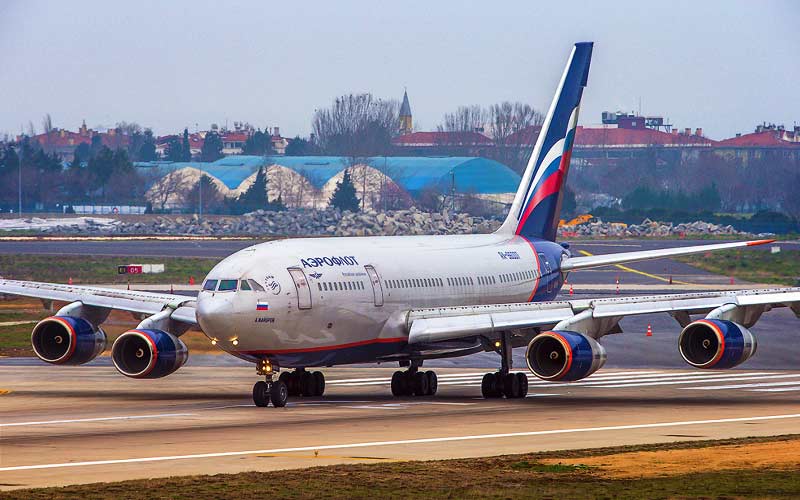
In the mid-80s, the Soviet Union began to develop a project to create a large aircraft for medium and long-range flights. The result of the work was the release of a new modification of the Ilyushin Il-96 aircraft. The first flight was made in 1988, and in 1993 mass production of the Il-96 began. the liner became the first in Russia (but still of Soviet design) wide-body long-haul aircraft.
The assembly of the liner is an all-metal, four-engine and wide-body low-wing aircraft. Has swept wings and vertical tail.
IL-86 can take on board 300 passengers. The flight range without refueling is 9,000 kilometers.
Many Il-96 models have their own names, including famous pilots: "Valery Chkalov", "Mikhail Vodopyanov".
One of Ilyushin's modifications, namely the Il-96-300PU, was the presidential aircraft number 1 for a long time. But in 2004, after the flight was canceled due to a bird strike at Lisbon airport, this honorable mission was removed from the aircraft.
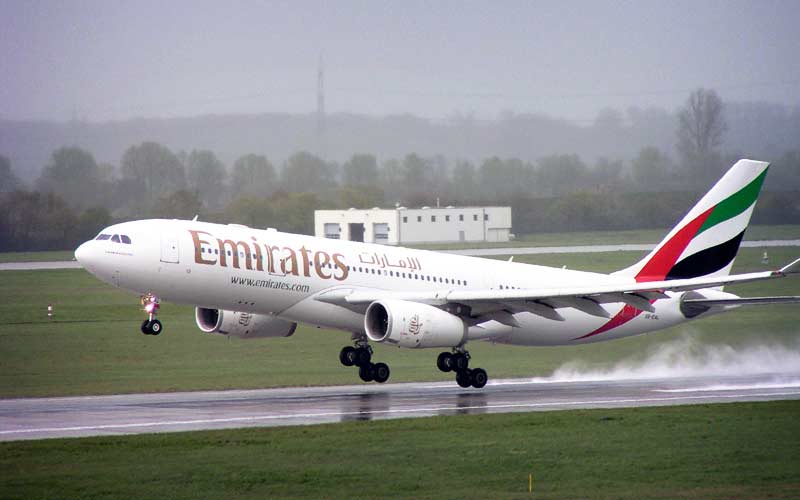
And this aircraft in the family of the largest passenger airliners has the saddest statistics. During the entire period of use of the A330, 8 aircraft were written off. The aircraft was mainly used in the Asian region and Africa. 4 Airbus A330 aircraft were destroyed as a result of hostilities in India and Libya. 2 were wrecked and 2 scrapped due to mishandling.
The test flight of the Airbus A330 took place on November 1, 1992. In 1997, the aircraft made its first flight with passengers on board. Today, with some modifications, this model is used by airlines under the code A330neo.
The aircraft performs both medium and long-range flights. The maximum range without aircraft refueling is 13,000 km. The manufacturer, fulfilling the wishes of customers, has created a very comfortable interior.
The aircraft is equipped with two turbofan engines, which allows it to reach speeds of up to 913 km per hour in the air.
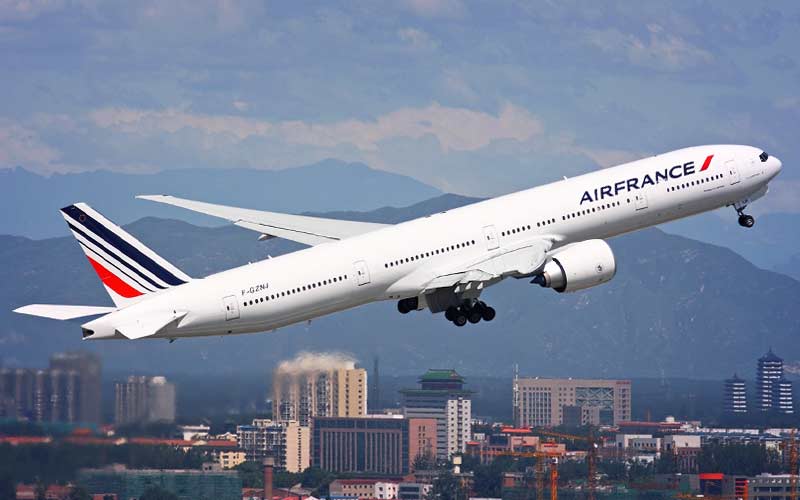
According to the criterion of flight range, the Boeing 777-300ER takes the first place in the world. Without refueling, this aircraft is capable of flying 21,601 km.
The operation of this aircraft began in 1995. Among the class of passenger liners with twin-engine jet engines, the aircraft is the largest, as it can accommodate from three hundred to five hundred and fifty people in its cabin.
With a rather large weight, almost 250 tons in full gear, the Boeing-777-300ER has a speed of 965 km per hour. Another design feature of this aircraft is the efficiency of the engines.
On the basis of this aircraft, the Boeing-777F and many other modifications were created, the basis of which remains the Boeing-777.
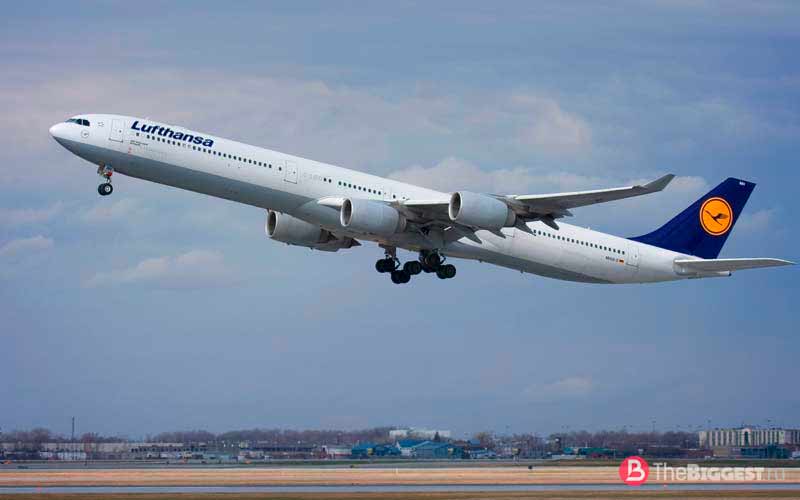
The Airbus A340-600 is one of the five largest passenger aircraft and belongs to the family of long-range airliners. Without refueling Airbus A340-600 can cover 14 thousand 800 km.
On international and intercontinental airlines, the aircraft began flights in 2002. With a cabin width of 5.5 meters, the aircraft can take on board 380 passengers. The length of the liner is 75 meters, and the wingspan is 63 and a half meters.
For the entire period of operation, 97 models of this liner were assembled. In 2011, the Airbus A340-600 was removed from serial production.
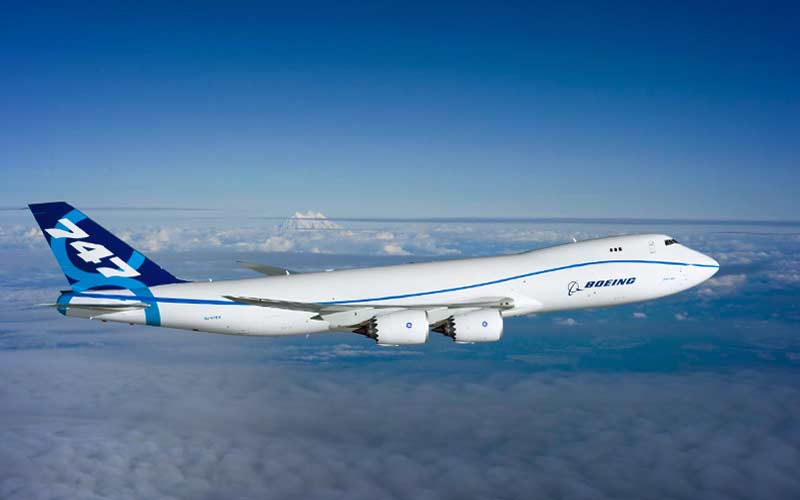
In 2005, Boeing launched the Boeing 747-8.
Promising differences from previous models were the elongated fuselage and significant efficiency. Manufacturers have improved aerodynamics by changing the sweep of the wing and making it thinner and wider. The shape of the wing allows you to reduce air resistance, which, of course, affects the reduction in fuel consumption.
This model is trusted by the governments of 19 countries of the world, which use the Boeing 747-8 for the flights of the first persons of the state.
The Boeing 747-8 is the largest commercial aircraft built in the USA. And its length of 76.25 m brings it to the first place in the world as the longest aircraft.
The Boeing 747-8 also holds the first place in the world in orders for VIP versions of the aircraft, intended for statesmen and famous world politicians.
Airbus A380
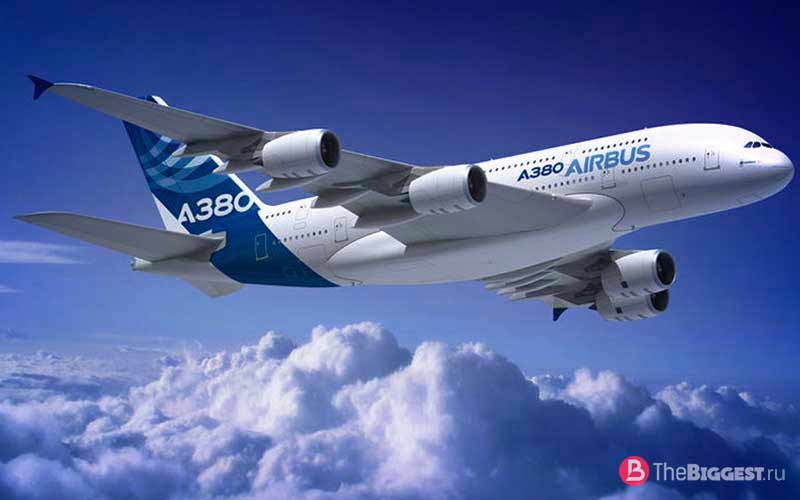
Airbus A380, which made its first flight in 2005, can rightly be attributed to the nomination "Giant Liner".
Today it is the largest passenger aircraft in the world. World airlines began using it for passenger flights in 2007. What brings the aircraft to the lead? Four jet engines located on the wings, the length of the aircraft is 72 m 70 cm, the wingspan of the airliner is almost 80 meters, the maximum flight range with a full load is 15,400 km. Causes surprise and the weight of the aircraft. Without passengers and cargo, it weighs 277 tons. The aerodynamics of the liner with such a weight is created so optimally that it is quite maneuverable and feels free in the airspace.
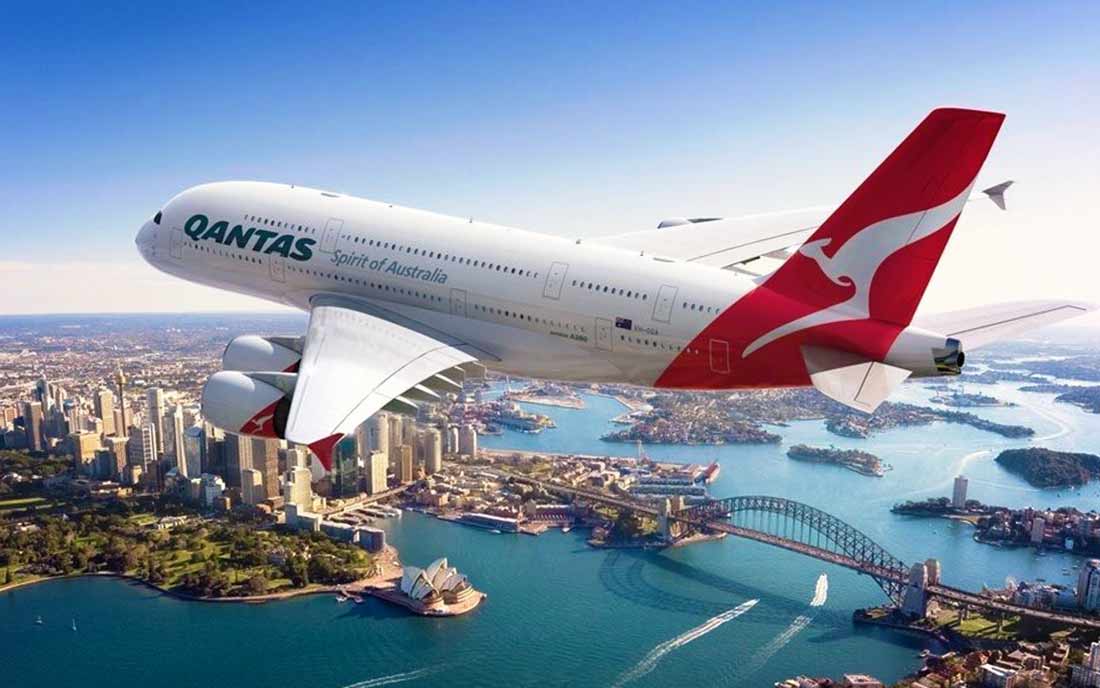
The flight qualities of the aircraft have been improved due to the graphite used in the production of aircraft parts. Wings and fuselage of a passenger liner are made of graphite.
The aircraft provides 853 passenger seats in a single-class configuration, when the cabin is divided into enon, business and first class, 555 passengers can board. For a more convenient location of passengers, the aircraft has 2 decks, so its height is 24 meters.
The development of the A380 project took almost 10 years. And the manufacturing company spent 12 billion euros to create the aircraft itself. Only Boeing aircraft are more expensive in the world.
Today, the Airbus A380 is actively used on intercontinental airlines.
Finally
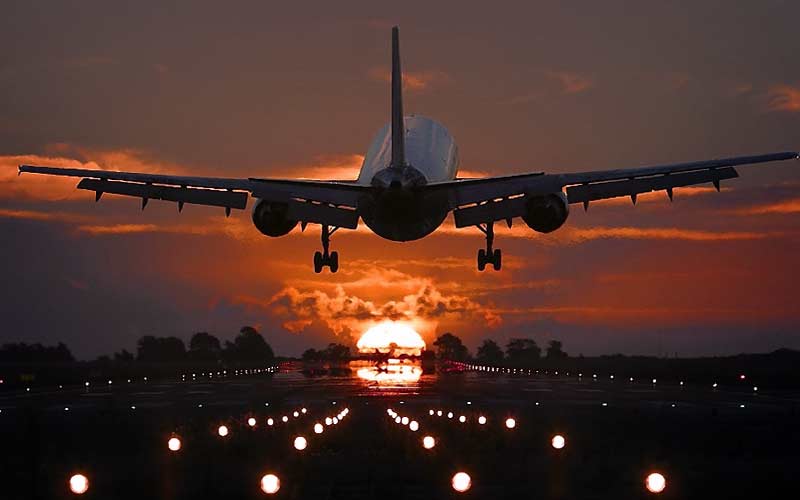
The history of aviation opens the veil and it is written on its pages that 60 years have passed from the first passenger who was taken on board in 1908 to the advent of multi-seat airliners, and today passenger aircraft amaze us both with their flight characteristics of altitude, speed and flight range, but and their sizes. Today, a transcontinental flight or many hours of travel on an airliner is no longer something surprising.
Great attention in the creation of large intercontinental liners is given to flight safety. In this regard, quite a long period of time passes from the idea of the project to the first passenger flight.
In pursuit of profit by increasing the number of passenger seats and the range of flights, manufacturing companies attract specialists from various industries who develop parameters for the safety and survivability of the aircraft when it gets into extreme situations in the air, during takeoff and landing.
Large passenger aircraft can be found in almost all airports in the world. Today, runways have been rebuilt for them, the navigation system and flight control have been improved.
Developments are underway to increase the speed of large passenger aircraft, by introducing new discoveries in the aerodynamics of the wing and increasing the power of the engines. But lately, the changes concern only, so to speak, substantive changes, such as improving the comfort of the cabins, the quality of passenger service. Leading airlines, manufacturers of airliners, pay great attention today to the introduction of anti-terror systems into passenger aircraft.




